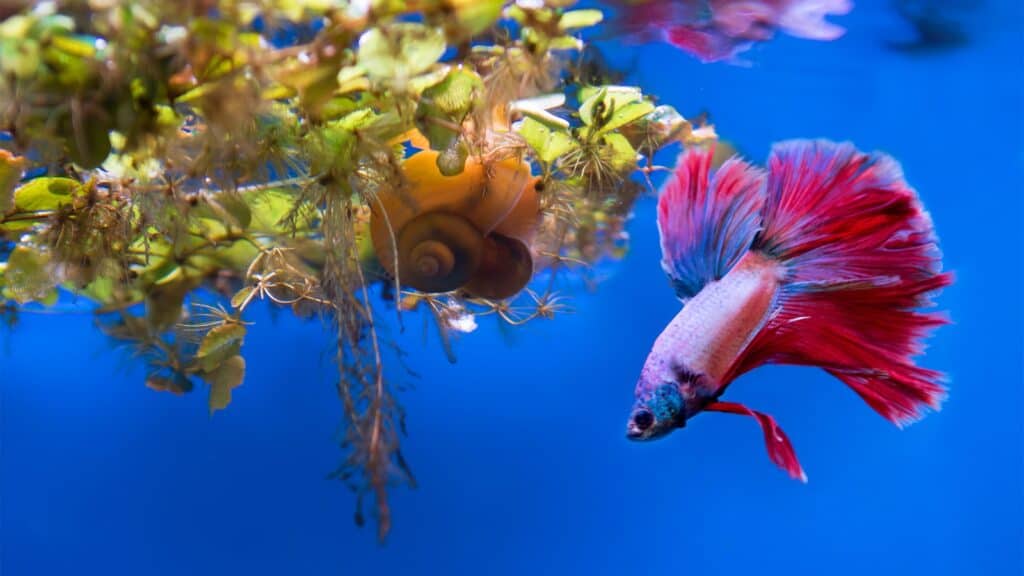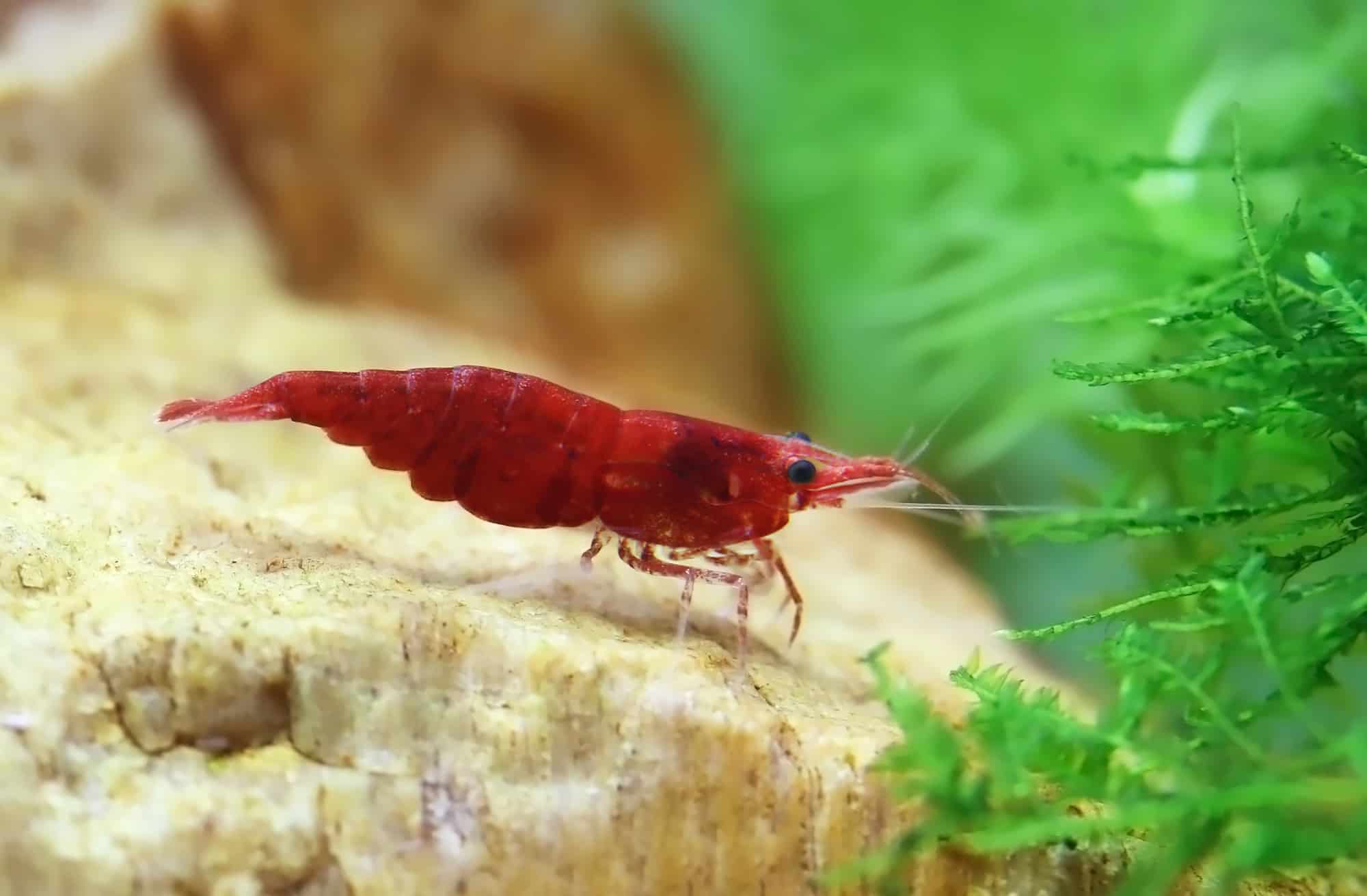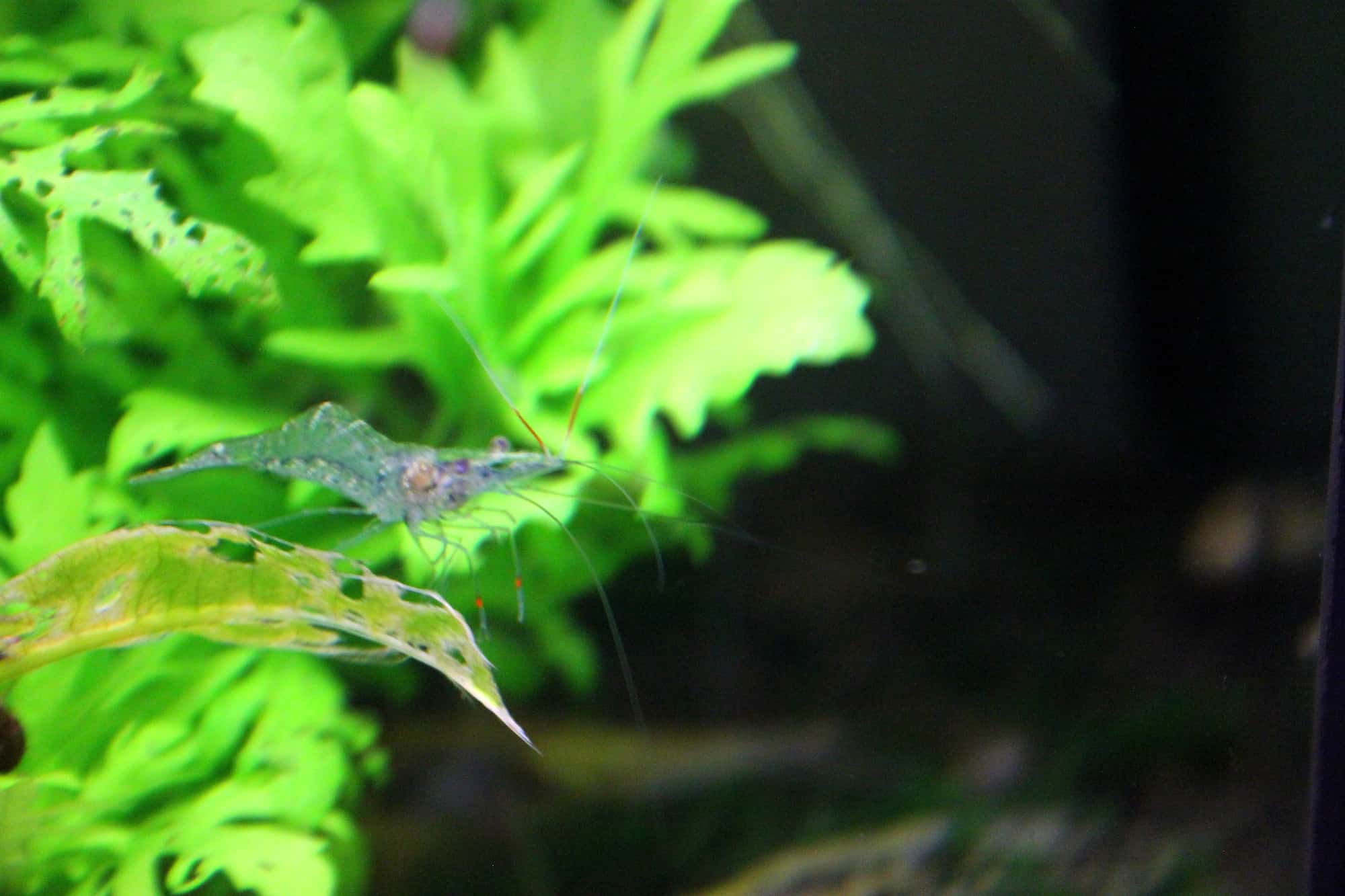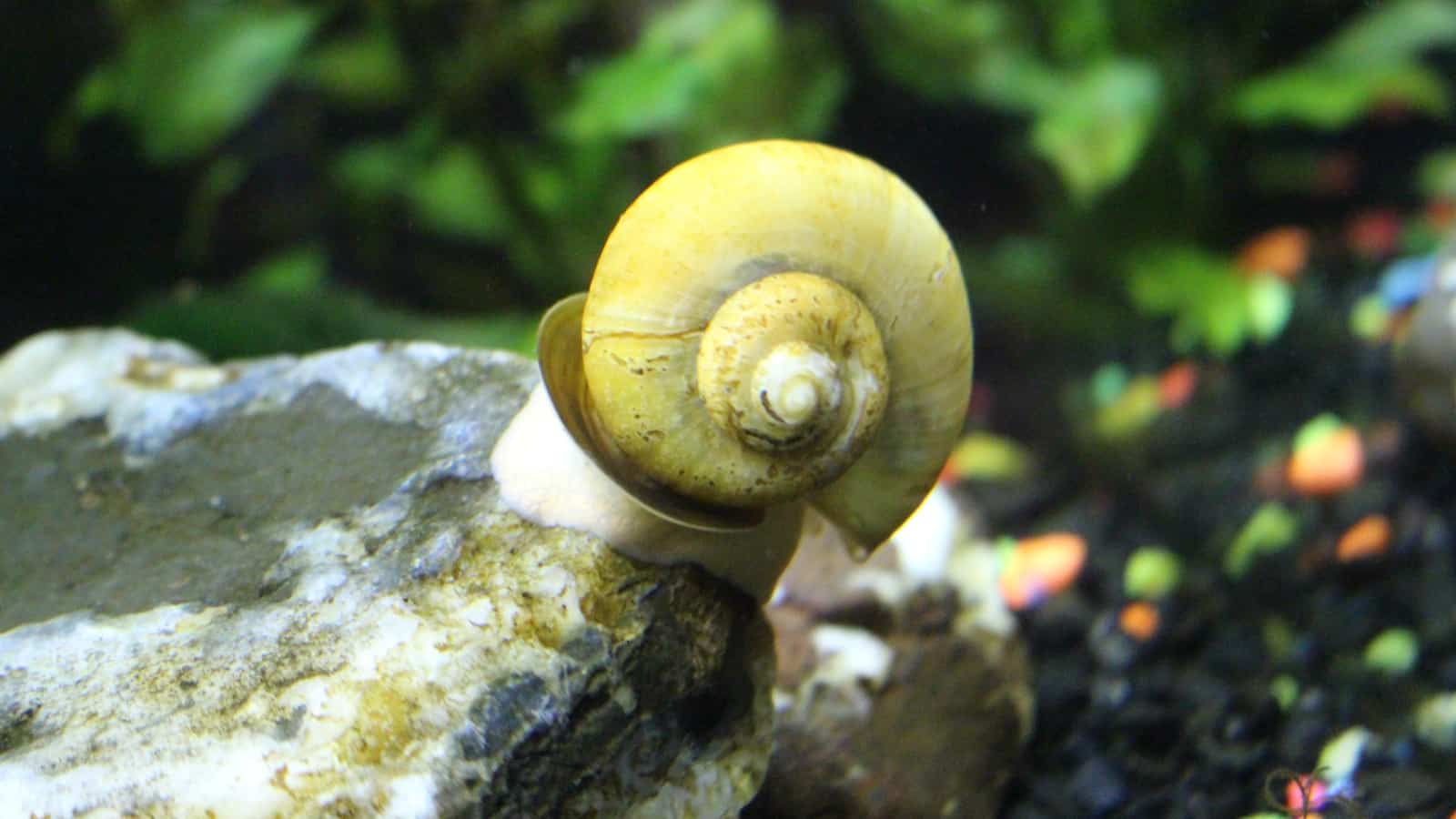One reason that betta fish are so popular is that you can keep them in 5- or 10-gallon nano tanks. But what about adding tank mates for them in such a small aquarium?
The truth is that 10-gallon tanks aren’t big enough to keep other types of fish with your betta. Despite much misinformation, this type of tank is too small for schooling fish such as tetras, cories, and rasboras.
There are still a few great options though, and here we’ll be introducing some fascinating and beautiful invertebrates to keep your tank both clean and interesting. Let’s get to know them better!
Key Takeaways
- Shrimp and snails are the best tank mates for small betta tanks. They’re small, peaceful, robust, and also help to keep the tank clean.
- A 10-gallon tank is too small to keep other fish with your betta. Doing so could easily result in overcrowded conditions, aggression, and fatalities.
- Adding tank mates adds diversity and interest to the tank, but be careful not to overstock a 10-gallon aquarium. Many invertebrates can breed prolifically and easily overpopulate your tank.
Shrimp
Freshwater shrimp are some of the very best betta tank mates for nano tanks. Not only do they help to keep the tank free from excessive algae, but they’re also beautiful, fascinating creatures in their own right!
Several types of shrimp make compatible tank mates with betta fish, but three of them are especially popular.
Cherry Shrimp
Cherry shrimp are the most popular type of freshwater shrimp for good reason. As their name suggests, cherry shrimp come in a beautiful reddish to pinkish color, and there are many distinct color forms on the market.
‘Cherries’ are small, peaceful critters that only grow to around 1.5 inches in length. While they’ll usually remain unharmed by betta fish, their small size can make them vulnerable to being attacked if you have an especially aggressive betta!
Typically living for around 2 years, cherry shrimp may be short-lived, but their prolific breeding habits mean there should always be more of them! This can be a mixed blessing, as they can sometimes overpopulate a tank that’s lacking enough predators.
Ghost Shrimp
The ghost shrimp is an invertebrate that is characteristically translucent which makes them nearly invisible in an aquarium environment, hence their common name.
Ghost shrimps are simple to care for and great for bettas because they are scavengers who eat excess food and algae. By cleaning up uneaten food before it rots, they help to keep water quality high.
These see-through creatures are great fun to watch as they play hide and seek among the aquarium décor. Keep in mind that they prefer to live around live plants!
Amano Shrimp
Amano Shrimp or Japanese Swamp Shrimp are a peaceful type of shrimp that are great mates for betta fish. They’re often seen as the kings of the algae-eating shrimp, doing a more thorough cleaning job than either Ghost shrimp or Cherry shrimp!
Unlike Cherry Shrimp, the Amano shrimp is not bright in color. Amano shrimps have gray, translucent coloration with subtle colored spots.
An adult Amano grows up to two inches in length, which ensures that they will not be eaten by your bettas. Another advantage of Amanos is that they can’t breed in freshwater, so will never overrun your fish tank!
Another thing that I love about the Amano is that they will eat sunken pellets from the bottom of the tank and keep waste to a minimum.
One to Avoid: Whisker Shrimp
While the above three shrimp species are very docile and will rarely fight with one another or with fish, there are other freshwater shrimp that are aggressive predators!
Sadly, the whisker shrimp is sometimes confused with ghost shrimp when they are young, and mislabelled in pet stores. Later, when they attack small fish such as bettas, people mistakenly report that a ‘ghost shrimp’ has eaten their fish.
To understand the difference between ghost shrimp and whisker shrimp, please check out our in-depth guide here!
Snails
Nerite Snails
Nerite Snails are great betta fish tank mates and are ideal for beginners. Their epic algae-eating capacities and well-behaved nature make them perhaps the very best snails for a betta tank.
Because nerite snails don’t eat aquarium plants and can’t breed in freshwater, they will never overrun your tank or damage plant growth like some other snails do.
The Nerite Snails come in a variety of species such as olive, zebra, tiger, and more. Nerites are great for a healthy betta fish tank because they eat a wide variety of algae just like the Amano shrimp does.
An interesting fact I love about nerite snails is their ability to prevent dehydration when moving between brackish and freshwater environments.
Mystery Snails
Mystery snails are another popular mollusk to choose for betta tanks. They’re almost as good at cleaning algae as nerite snails – but there is a hitch!
One of the ways that mystery snails may have gotten their name is the almost unbelievably fast rate at which they reproduce! If your betta doesn’t take to eating the young snails, they could easily overpopulate your tank.
An important thing to consider when adding any snail species to your tank is closely watching the pH. To maintain a hard shell, snails prefer a slightly more alkaline pH than betta fish. If kept at just above neutral, both species should thrive.
Pond Snails
Pond snails or bladder snails aren’t very striking in appearance, but they can be highly beneficial for your aquarium. They eat dead plants, algae, and other debris to keep your aquarium clean.
The downside to pond snails is that they do reproduce a fair amount so overpopulation can happen, therefore you may have to remove some here and there to prevent this.
The good news is pond snails are very hardy and can survive in conditions other tankmates cannot. They’re very easy to care for as long as you don’t let them crowd out your tank!
One to Avoid: Columbian Ramshorn Snails
Just as ghost shrimp can sometimes be confused with whisker shrimp, the aquarium-friendly ramshorn snail can sometimes be confused with the detrimental Columbian Ramshorn snail.
While regular ramshorn snails only eat algae, detritus, and dead plant leaves, Columbian Ramshorns are notorious for consuming large quantities of live plants, snail eggs, and even other snails!
They can also breed rapidly, making them very difficult to remove once an infestation has set in. Because we advise planted tanks with betta fish, the Columbian Ramshorn is definitely not a good choice!
Why We Don’t Advise Other Fish for a 10-Gallon Tank
While several invertebrates make excellent companions for bettas in small tanks, we’d advise you not to try keeping other fish with your betta in such a small tank. Here’s why:
Bettas Are Aggressive Fish
Betta fish haven’t been nicknamed ‘Siamese Fighting Fish’ for nothing. While their characters vary greatly, it’s best to assume that your betta will be at least semi-aggressive toward its tank mates.
Other bettas are downright territorial and will claim the entire tank as their own, attacking and killing anything that’s added to it. Introducing other fish that could intrude upon your betta’s space in such a small tank is a recipe for disaster.
Schooling Fish Need Larger Tanks
Mid-water schooling fish like neon tetra and harlequin rasboras should never be kept in tanks smaller than 20 gallons in any type of setup, since they require adequate space to engage in their natural schooling behavior.
In a 10-gallon tank, schooling fish will tend to ‘bob’ or ‘hover’ rather than swimming together. Furthermore, true schooling fish should never be kept in groups of less than 6, with larger numbers being preferable.
When kept in small numbers and cramped conditions, schooling fish like tetras often become stressed and aggressive, and could easily start nipping not just at each other, but also at your betta’s fins. This nightmarish situation can easily be avoided by getting yourself a larger aquarium.
Larger Tanks Are Easier to Maintain
It may seem counter-intuitive, but tanks with a larger volume of water are much easier to maintain and regulate than nano aquariums.
This is because the extra water gives much greater ‘buffering capacity’ – in other words, water temperature, and water chemistry remain much more stable.
This is extra important when keeping additional fish since their bio-load could easily overwhelm a small aquarium, causing potentially fatal ammonia spikes or dangerously high nitrate levels.
Want a Betta Community Tank? Get a 20-Gallon Aquarium
If you’re serious about keeping other fish with your betta, we’d strongly encourage you to invest in a 20-gallon tank.
At 30 inches long, a 20-gallon ‘long’ aquarium gives fish far more space to school together, establish territories, and keep out of one another’s way.
In an aquarium like this, you could happily keep betta fish alongside fish such as neon tetras, ember tetras, harlequin rasboras, guppies, platies, corydoras catfish (cories), kuhli loach, and more!





